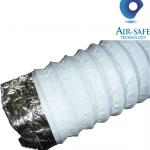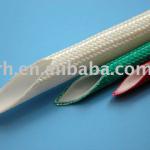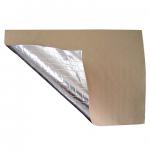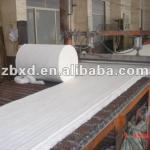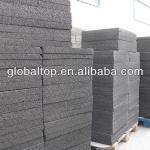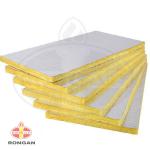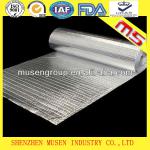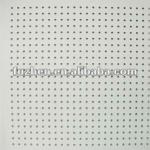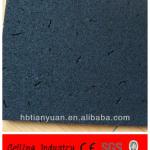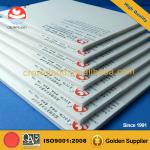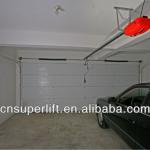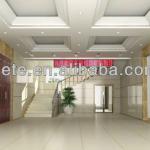A grade insulation foam glass - many
| Type: Other Heat Insulation Materials | Place of Origin: Tianjin China (Mainland) | Brand Name: sophiema | Model Number: many |
| Product density/(kg/m3): 130-60 | Porosity/%: 94-95 | Water absorption/(volume)%: ≤0.2 | Compressive strength/M Pa: Average 0.7 |
| Rupture strength/M Pa: Average 0.5 | Elastic modulus/M Pa: 1250 | Thermal conductivity factor/[W/(m. K) ]: Room temperature0.052 | Corrosion resistance: Excellent |
| Processing: Good | Category: Heat-insulating foam glass,Sound-absorbing foam glass,PIR and etc. |
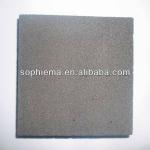
Foam glass is a finely ground glass powder as the main raw materials, by adding a foaming agent after melt foaming and annealing cooling processing handling, manufactured with uniform independent aperture closing(opening) air gap structure of new inorganic materials. Since these new materials have moisture-proof, fire-proof, and anticorrosion functions, Combined with the glass materials with long-term use without deterioration of characteristics, and used in such harsh environments as thermal insulation, deep cooling, underground, open air, flammability, humidity, chemical corrosion and etc. so the users are greatly favored with it.
Insulation foam glass in energy conservation of exterior wall application
Foam glass wall plate insulating layer compared to other thermal insulation materials
| Material | Volume weight /kg.m3 | Thermal conductivity of 30 °C/ W.(m. k) | Compressive strength/M Pa | 1 m2of the quality of the insulation layer |
| Foam glass | 140-160 | 0.052-0.06 | 0.4-0.5 | 10-13 |
| Foam glass | 180-250 | 0.075-0.087 | 1.5-2.5 | 15-20 |
| Sticking with asphalt with semi-rigid mineral wool Board | 230-300 | 0.075-0.087 | 20-30 | |
| Rigid mineral wool board | 300-400 | 0.081-0.093 | 0.15 | 25-35 |
| Aerated concrete | 400-800 | 0.16-0.26 | 0.6-2.5 | 60-160 |
| The heat-insulating porous sintered clay | 500-600 | 0.17-0.21 | 1-2.0 | 70-120 |
Heat-insulating foam glass applied to deep cooling low cooling, refrigeration equipment and pipeline installation.
Sound-absorbing foam glass
Sound-absorbing materials: Sound-absorbing foam glass absorption coefficient of the low-frequency (120 -125Hz) is 0.35-0.45.But high frequency sound absorption coefficient is above 0.5, 125-1600 Hz average absorption coefficient is above 0.58, incombustibility, good thermal stability, odorless, non-toxic .Available for various types of Silencers for ventilation, indoor acoustics and noise control, factory noise source workshop control Office, can also be used foam glass wall of sound-absorbing materials to reduce interior noise the sound pressure level.
Sound-absorbing foam glass is aperture-opening structure, unlike thermal insulation foam glass as sealed porosity. Sound-absorbing decorative foam glass mostly made of light-color. Neutral foaming agents, such as carbonates, nitrates, alkali, etc. are generally used in the production process, so that products do not stain when in the foamed. Alternative blowing agents and colorants, foam glass that can be made with various colors, like black, gray, purple, green, and blue, and so on. The sound absorbing decorative foam glass is generally made of a plate shape, the maximum size 600mm x 600mm, thickness of 20mm-300mm.
Sound absorption coefficient | Frequency(Hz) | 125 | 500 | 1000 | 2000 | 4000 |
| Sound absorption coefficient | 0.21 | 0.33 | 0.45 | 0.48 | 0.60 | |
| Volume weight | 140-190kg/m3 | Open porosity | ≤52% | |||
| Compressive strength | 0.5M Pa | Flammability | Noncombustible | |||
| Rupture strength | 0.6 M Pa | Operating Temperature | ≤500°C | |||
Physical and chemical properties of the foam glass
The characteristics of foam glass is non-flammable and can be used in a wide temperature range and excellent resistance to chemical corrosion, without putrefaction, airtight, no moisture, long-term use of the same performance, good mechanical strength, easy to process ,and free from rats gnawing.
The physical performance of the foam glass products
| Performance | Data | Performance | Data |
| Product density/(kg/m3) | 130-60 | Quality hot melt/[J/(kg. K) ] | 837.3 |
| Porosity/% | 94-95 | Expansion coefficient/K-1 | 8×10-6 |
| Water absorption/(volume)% | ≤0.2 | Operating temperature range/°C | -270~+430 |
| Compressive strength/M Pa | Average 0.7 | Flammability | None |
| Rupture strength/M Pa | Average 0.5 | Aging | None |
| Elastic modulus/M Pa | 1250 | Corrosion resistance | Excellent |
| Thermal conductivity factor/[W/(m. K)] | Room temperature0.052 | Processing | Good |
JC/T647-2005
Item | Classification | 140 | 160 | 180 | 200 | |||
Grade | Excellent (A) | Qualified (B) | Excellent (A) | Qualified (B) | Excellent (A) | Qualified (B) | ||
Volume density, ≤kg/m3 | 140 | 160 | 180 | 200 | ||||
Compressive strength/M Pa | 0.4 | 0.5 | 0.4 | 0.6 | 0.8 | |||
Rupture strength/M Pa | 0.3 | 0.5 | 0.4 | 0.5 | 0.8 | |||
Volume water absorption, ≤% | 0.5 | 0.5 | 0.5 | 0.05 | 0.5 | |||
Permeability coefficient, ≤n g/(Pa. s. m) | 0.007 | 0.05 | 0.007 | 0.05 | 0.064 | 0.05 | ||
Thermal conductivity factor≤/(m. K)average temperature | 308K(35°C) | 0.048 | 0.052 | 0.054 | 0.064 | 0.066 | 0.07 | |
| 298K(25°C) | 0.046 | 0.050 | 0.052 | 0.062 | 0.064 | 0.068 | ||
| 233K(-40°C) | 0.037 | 0.040 | 0.042 | 0.052 | 0.054 | 0.058 | ||
Product density
The density of foam glass products, also known as volume weight and the general value is 140-160 kg/m3and average value is 150kg/m3.
Thermal conductivity factor
Above the zero degree, thermal conductivity and temperature of foam glass have linear relationships. According to the diagram, calculated by extrapolation above 0°C, foam glass thermal conductivity and the temperature relations can be obtained under the different density foam glass at 0°C between 0.047-0.052W/ m. k).Expressed by the formula is λ= (0.040~0.045)+0.00018t between 0.010~0.045,the large density of the product takes the upper limit, and the small density takes the lower limit. When operating temperature is below zero, foam glass thermal conductivity and temperature relationships are visible through the diagram. When the temperature is below zero, the thermal conductivity and the temperature is not a linear relationship, this may be related to the heat transfer characteristics of the gas in the bubbles. The thermal conductivity factor table of the common foam glass products under the different temperature and density.
Permeability, water absorption
Since the foam glass are composed of inorganic glass separate sealed bubbles, not like other thermal insulation materials, because capillary was the role of water sucked into the inside. Since foam glass products have little water vapor permeability and water absorption, in the application of cold protection, it will not lead to tissue destruction by water ice absorption and material deterioration of insulation performance. By cup testing method for permeability of several thermal insulation material results, seen from the diagram, the moisture permeability of the foam glass is almost zero.
Determination of the water absorption of the foam glass is immersed in water at 21°Cfor 2h, expressed as a percentage of the volume of water absorption. In general, the foam glass water absorption rate of less than 0.2%.
Mechanical performance
The inorganic insulation materials are generally lightweight, low mechanical strength, their common characteristics. The mechanical strength of foam glass products is proportional to the density of its products. Compressive strength is generally above 0.5MPa and average is 0.7MPa,rupture strength is generally above 0.4MPa,and average is 0.5MPa.
A grade Non –inflammability
According to Japan Refrigeration Association and Institute of technology tested, the foam glass belongs to a non-combustible material of A grade regulated by a marine human life security treaty.
Anti-corrosion characteristics
Foam glass, after all, is the glass, resistant to most acids, alkali, organic solvent and water vapor erosion away from hydrofluoric acid, long-term use also does not deteriorate under extremely harsh conditions, free from rats gnawing.
The characteristics of foam glass
1Product is not deformed, durable, non-toxic, chemical stability, resistant to most organic acids, inorganic acids, and hydroxides.
2 No weathering, No aging, Non-toxic itself , Non-radioactive, and non-corrosive.
3 Mold proofing & free from insects& free from rat gnawing& anti-corrosion and non-degeneration.
4 With good insulation performances, high resistance, low temperature, non-inflammability, can be used within a wide temperature range of -268~+482°C.
5Insulation, shockproof, non-combustible, fire proof , thermal insulation (cold) insulation, and has good sound absorption performance.
6 The low thermal conductivity, non-hygroscopic, non-absorbent, high compressive strength, good dimensional stability, small water vapor permeability coefficient, it will not reduce the thermal cooling effect in spite of the all the year round use.
7It is safe and reliable under the harsh environments such as, low temperature and deep cooling, underground, open air, inflammable, damp -proof ,the chemical corrosion and etc.
8 With a high mechanical strength, according to the user’s requirements, can be processed into semi- hollow cylindrical type, available multi-block to stick and spell, and can also be used two or more layers of installation.
Foam glass specifications and applications
| Product | Product specifications | Application | ||||
| Category | Length(mm) | Width(mm) | Thickness(mm) | Inside diameter(mm) | Roof Wall Ground | |
Flat plate | 520 600 610 620 630 | 300 470 480 500 600 | 20 30 40 50 60 70 80 90 100 150 180 200 | Φ27mm-1100m According to the user’s needs to process | ||
High and low temperature piping | ||||||
| Shell | ||||||
The wide application of foam glass
1Deep cooling and low temperature piping, equipment, containers and storage
2Mild and high temperature piping, equipment
3Thermal oil and hot asphalt storage tanks
4Fluid heat transfer systems
5Petrochemicals, sulfide production process
6 Compressor, wind engine room sound-insulated and sound absorption wall, highway shield sound absorption
7 The ceiling of the building, retaining wall, interior wall, exterior wall thermal insulation
8 Water discharged to seepage of high temperature pipe insulation system “interference insulation "to restore its insulation performances.
9 Compound heat insulation system which under the special conditions works
PIR
PIR, English full name: Poly isocyanurate foam, abbreviated by PIR, and also called Poly isocyanurate, is a new type of thermal insulation materials for deep cooling, can be used from-196 ° c ~120 ° c range of all kinds of pipes and equipments, as well as the demand for thermal insulation of the building. For the development and application of PIR material in China , ensuring the technical basis for perfect compliance with existing GB system. PIR is the foamed material, after exposure to isocyanates catalysts, which react with polyether. Its physics and fire proof performances are more excellent than ordinary polyurethane. It is an ideal organic low-temperature insulation material. Small heat conductivity factor, and lightweight shock-proof and high adaptability. Widely used in refineries, chemical plants, ethylene, fertilizer, cold storage, and the architecture industry insulation.
1 Thermal conductivity performance is excellent and it is the head among all the organic cold protection materials.
2 Fire -proof performance conforms to the standard of GBB 624 flame retardant B1-level, American ASTM E 84.
3 Used in ultra-low temperature environments with high compressive strength, low thermal conductivity, excellent dimensional stability, and other outstanding performances
4 Cut molding will be able to meet the composite multilayer structure design requirements of all kinds of thickness to ensure installation quality
5Temperature ranges from -196°Cto +130°C
| Packaging Detail:Carton or according to the customer's requirements |
| Delivery Detail:10 working days |



